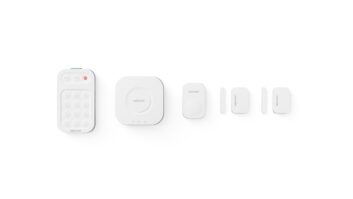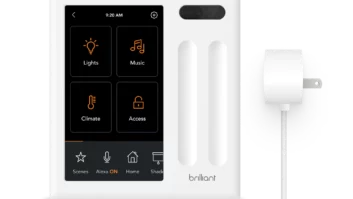Consumer surveys show smart-home adoption is accelerating, and smart-home suppliers hope to generate further momentum by offering high-demand features or making their products interact with other brands of products.
In recent days, companies such as August, Belkin, GreenIQ, LeakSmart, LIFX, Lutron, and Nortek have enabled select products to integrate with other-brand products. And to expand the potential customer base, iDevices introduced a smart light-bulb socket to turn any light bulb into a Wi-Fi-connected smart bulb.
The product developments come at a time when consumer intentions to buy smart-home products jumped sharply in less than two years, Parks Associates found.
Purchase intentions among U.S. broadband households more than doubled between the first quarter of 2014 and the last quarter of 2015, rising from 21 percent in early 2014 to almost 50 percent at the end of 2015, company research found.
“Safety and security are the main drivers for consumer interest,” said Parks president Stuart Sikes.
Once people get the products home, Sikes added, consumers use them frequently. Among owners of most safety and security devices, 40 to 50 percent control or monitor the products on a daily basis, he said.
A recent Coldwell Banker survey found that 45 percent of all Americans either own smart-home technology or plan to invest in it in 2016. Among people who don’t have smart-home technology, 27 percent said they will buy it in 2016.
Seventy percent of people with smart-home technology said buying their first smart-home product made them more likely to buy another one.
Here are some of the new products that suppliers hope will prove addicting:
August: The August Doorbell Cam now works with the Nest Cam so that camera views from both products can be viewed together on the August app. The app shows Nest Cam videos captured just before or after a visitor rings the doorbell. Like before, the August Smart Lock app lets users set the status of their Nest thermostat to Home or Away and view interior temperature.
Belkin WeMo: Lights controlled by WeMo smart-home devices will turn off automatically when the Nest thermostat senses when no one is in the house.
iDevices: Socket is a $79 Apple Home-Kit-certified Wi-Fi light-bulb adapter, which adds wireless control and smart capabilities to any light socket. It’s one of the few Wi-Fi light-bulb adapters available, and it works with standard incandescent bulbs up to 60 watts and LED and CF bulbs.
Key features include dimming, ability to create lighting scenes, a customizable color LED light ring to add ambiance and Siri voice-command control.
Unlike some HomeKit-certified devices, Socket does not require an Apple TV in the home to enable remote access. Apple lets suppliers choose whether to use Apple TV or build their own Cloud to enable remote access, iDevices said.
GreenIQ: Start-up GreenIQ has integrated its wireless irrigation controller with Crestron’s luxury home- and building-control systems. Now, through Crestron touchscreens and other controllers, users can monitor and adjust irrigation schedules based on soil and moisture sensors from Parrot, Koubachi and PlantLink and based on hyper-local weather information obtained from Netatmo’s Weather Station and Rain Gauge.
KingTing Tech: The company unveiled a series of YoSmart-brand smart-home products based on the LoRa wireless spread-spectrum standard to control devices up to 1,600 feet away without using mesh-network topologies like those used in ZigBee and Z-Wave devices.
The LoRa Alliance, which includes more than 130 members, last November launched the LoRaWAN certification program to ensure interoperability among products. The alliance includes IBM, Cisco, Semtech, Microchip and SK Telecom. The technology is said to deliver longer range with less power consumption than ZigBee and Z-Wave.
LeakSmart: The company’s leak-detection system now integrates with Nest products through the Works With Nest program. If a wireless LeakSmart sensor detects a water leak when the Nest thermostat senses that no one is home, the LeakSmart system will automatically shut off the home’s main water valve. The system also gives consumers the option to dial an emergency contact through the LeakSmart app. The app also displays the home’s indoor temperature and humidity.
LeakSmart shuts off the water in less than five seconds whenever a sensor detects a water leak, the company said. The system is sold by Amazon and direct by LeakSmart.
LIFX: The company’s LED smart bulbs will now turn on when Nest’s Nest Cam senses motion.
Lutron: The company’s Caséta Wireless light- and shade-control system previously integrated with the Nest Learning Thermostat and Nest Protect smoke and carbon monoxide alarm. But now, when the Nest devices detect when everyone has left the house, lights controlled by Caséta Wireless will now automatically turn off. Also new: If smoke or CO is detected, the lights can turn on automatically and shades opened to help people find their way. Consumers previously could use the Lutron app to set Nest thermostat temperatures.
Nortek: Nortek brought technology from home-automation platform provider MiOS to its Elan home-control systems after having purchased a 25 percent stake in the company. MiOS is working primarily with Nortek’s Broan-NuTone business, Nortek Security & Control and Core Brands residential installation.
Nortek has already upgraded the Elan home-control system to support MiOS’s VeraEdge bridge, which enables Elan systems to control select third-party Z-Wave devices.
Tend: The maker of Kodak-brand smart-home products is replacing its VFH-V15 Wi-Fi surveillance camera with the $149 CFH-V20, positioned as offering the capabilities of the $199 Nest Cam. It features 180-degree HD video capture, electronic pan/tilt/zoom capability, two-way audio night vision, built-in Wi-Fi extender, and ability to integrate with other-brand smart-home products via the Cloud-based IFTTT service. It comes with a Cloud service that stores a day’s worth of video clips at no charge.













